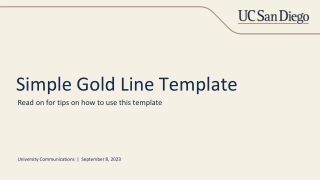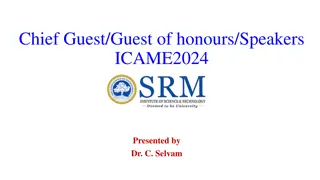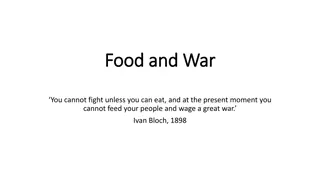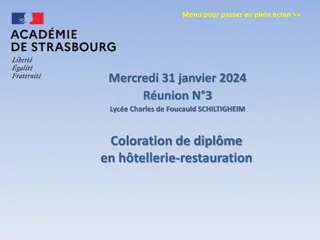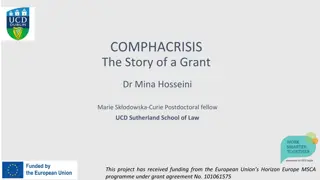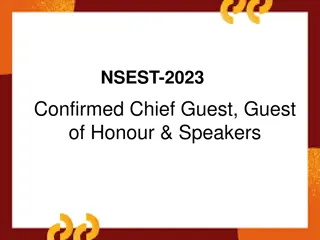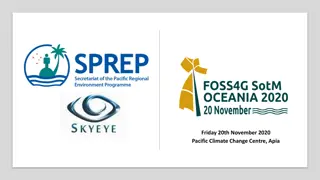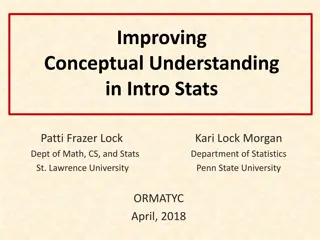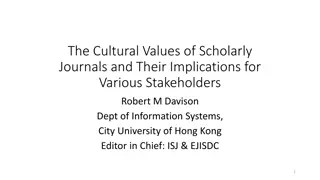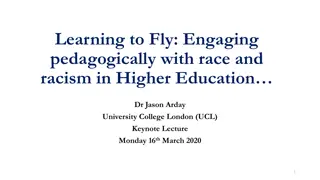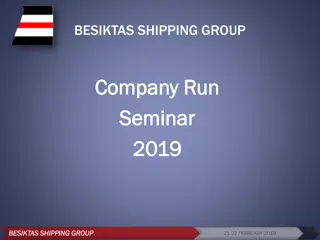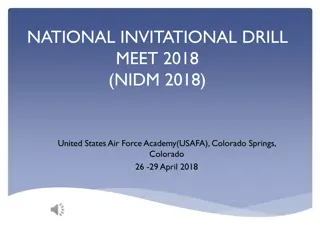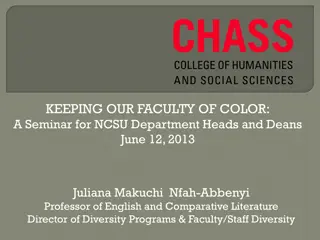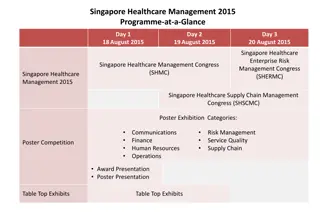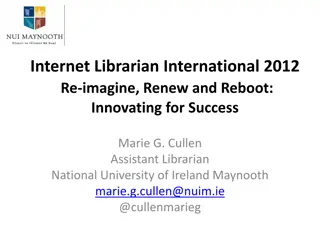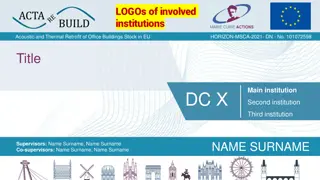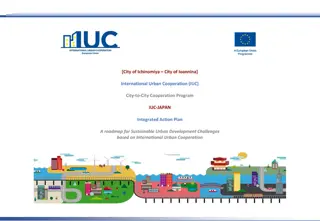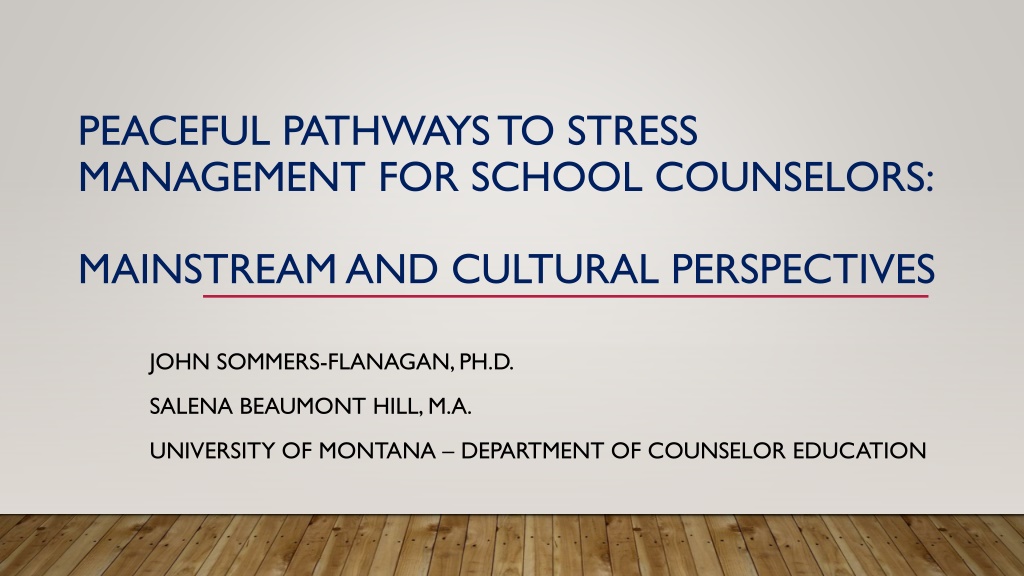
Effective Stress Management Strategies for School Counselors
Discover practical stress management techniques and insights for school counselors to enhance self-awareness, mitigate burnout, and promote well-being in a demanding educational environment. Engage in experiential activities, learn about various stress management approaches, and cultivate a space for personal growth and professional development.
Download Presentation

Please find below an Image/Link to download the presentation.
The content on the website is provided AS IS for your information and personal use only. It may not be sold, licensed, or shared on other websites without obtaining consent from the author. Download presentation by click this link. If you encounter any issues during the download, it is possible that the publisher has removed the file from their server.
E N D
Presentation Transcript
PEACEFUL PATHWAYS TO STRESS MANAGEMENT FOR SCHOOL COUNSELORS: MAINSTREAM AND CULTURAL PERSPECTIVES JOHN SOMMERS-FLANAGAN, PH.D. SALENA BEAUMONT HILL, M.A. UNIVERSITY OF MONTANA DEPARTMENT OF COUNSELOR EDUCATION
INTRODUCTIONS* Salena John
TODAYS PLAN A morning with a information and experiences that help us expand our: Stress-related self-awareness Knowledge and understanding of the many dimensions of human stress and the stress response Application of many* distinct and overlapping approaches to stress management, self-care, and neurobiological behavioral regulation
OUR GROUND RULES Be open to learning Communicate respectfully Engage in experiential activities to whatever extent you are comfortable [*ignore us as needed] Take care of yourself and have as much fun as we can while we learn together
OPENING STORY Full disclosure** Warning: There is profanity in this story One perfect SFBT hour
OPENING THOUGHTS School counseling involves: Interpersonal intensity Multitasking Suicide prevention and intervention Trauma support Parents Teachers Administrators
OPENING THOUGHTS II Survey: Your school counseling frustrations? If you don t know your hot buttons you re destined to get them pushed The definition of burnout: A state of fatigue or frustration brought about by devotion to a cause, way of life or relationship that failed to produce the expected reward
SELF-AWARENESS I: CENTERING Breathing and awareness [Ways to think about this] Notice your thoughts Notice your body Notice what you want, your impulses Notice the temperature, smells, sounds Notice the room and the view from inside yourself Welcome each other
SELF-AWARENESS II* Debrief on centering What gets in the way? [Yapping dog]+ What helps? [knowing what gets in the way]+
SELF-AWARENESS III Exploring YOUR Stress Response Get ready to TALK Sixty seconds
SELF-AWARENESS IIIA Debriefing Where did you feel the stress in your body? What thoughts were popping in and around your brain? What emotions did you feel? What IMPULSES or desired ACTIONS could you feel in yourself?
SELF-AWARENESS IIIB* Debriefing Stress genogram Know thyself! And cope with your stress based on your self knowledge Stress accumulates; opportunity ameliorates (Garbarino + ACES) Intergenerational stress and trauma (ACES)
INTELLECTUALIZING TOGETHER Preparation Coping Self- Reinforcement Exercise Breathing Latte Physical Mental practice (planning) Guiding self-talk Mocha Mental/Cognitive Know thyself Let the emotion be there Donuts Emotional Coaching/Support Your team (posse) High fives all around Social Sweat lodge Ancestor strength Humor and laughter Cultural Prayer Prayer Prayer Spiritual
ACTIVITY: THE NATURAL SOLUTION What happened in your body? What happened in your brain? What about this experience worked for you? What didn t work so much? Why does it work for some people, but not for others Which category of strategy did we use?
WORDS WERE ORIGINALLY MAGIC Milk, Milk, Milk Think of all the qualities associated with the word milk Repeat word for 45 seconds [Together] Reflect
MILK, MILK, MILK RESEARCH Masuda et al., 2009 Two studies UGs generated a negative self-referential thought Rated the thought on discomfort and believability They said the word repeatedly out loud for: 1, 3, 10, 20, or 30 seconds. They rated the emotional discomfort and believability of the word again.
RESEARCH RESULTS Emotional discomfort of the word went down within the 3 10 seconds Believability took longer, about 20 30 seconds. Emotional discomfort and believability may be different constructs.
APPLICATION Pick a word that causes you stress All together now . . . Results?? [Preparation; Coping; Self-Reinforcement] Implications: How do you get away from the WORDS?
ACTIVITY: CREATING RITUALS No shop talk at lunch Transition to the person you are at home Your transition song(s) Message to a friend/partner; prayer; mindfulness meditation Going on a run; yoga Table talk What s so hard about these simple rituals that we know are good?
ACCEPTANCE AND COMMITMENT THERAPY (ACT)* Acceptance vs. problem-solving The Serenity Prayer ACT, mindful acceptance, and the Brain Insula exercises John and Selena Demo
GROUP ACTIVITY: THE BEHAVIORAL PLAN Student One-Liners What student comments (including nonverbal behaviors) really get under your skin? How do you deal with these? Could you improve on your response to these one-liners? How?
ACTIVITY: GRATITUDE Writing a postcard/letter/email/text/IM of gratitude to a meaningful person When? How often? Results?? Now: Visualize . . . Who do you tell . . . in this room?
BREAK TIME Take that GRATITUDE and spread it around during break Louis Armstrong or Just Breathe
ACTIVITY: THE ONE METHOD There is only ONE method for anxiety/stress reduction Let s do it now . . . As the SLEEP SOLUTION
DEBRIEF: THE ONE METHOD What worked or didn t work for you? What is theoretical principle is this approach based on? What strategy and category did we employ? Could this fit for all the strategies and categories?
ACTIVITY: STORYTELLING Salena John Others
ACTIVITY: LETTER TO YOUR CHILD Opt in or opt out Non-dominant hand-writing
ACTIVITY: DISTRACTION This is the simplest approach of all . . . EXAMPLES What s needed to do it is the ability to pull back from the moment and get distance You have to want to do it
CLOSING ACTIVITY Get with a partner/table Share your favorite stress management activities If you can, identify something new [from today] that you will try to do this year to manage your stress

